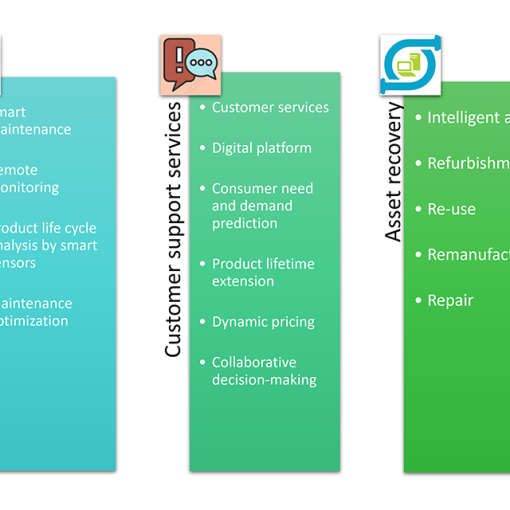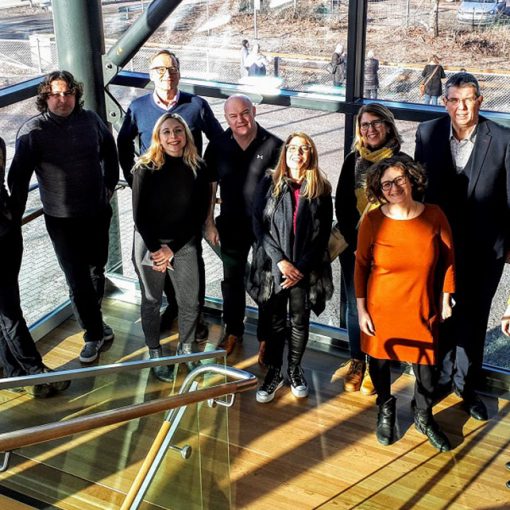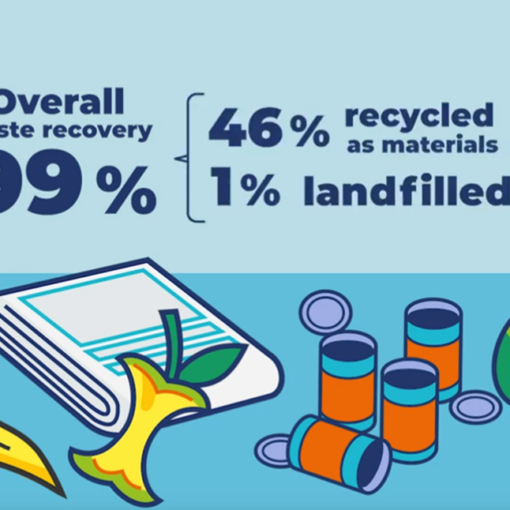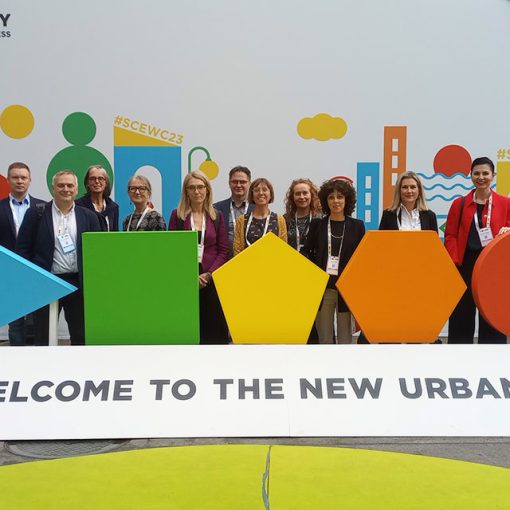In September 2020, an Interreg EU funded CECI project published a Finnish podcast Sustainable Dressing and Sharing (Kestävä pukeutuminen ja jakamistalous). The topics discussed included solutions around sustainable consumption, sharing economy and renting clothes instead of owning them. After the podcast recording, three participants Anna Svartström (LAB) Katerina Medkova (LAB) and Soile-Maria Linnemäki (Vaatelainaamo Vaatepuu) continued an informal discussion on the topic. How long should one use a piece of clothing to be sustainable?
As CECI Communication Manager, Katerina Medkova, mentioned her 19-year-old T-shirt, which has gotten the first holes and is considering to upcycle the T-shirt into a rag before it ends up at energy waste. Perhaps 19 years ago, quality and not only quantity were taken into account when producing garments.
The conversation and podcast session included Soile-Maria Linnemäki from Vaatelainaamo Vaatepuu, a sustainable clothing service founded in 2013. The company has sharing economy as their operating system and rents garments and accessories.
She mentioned that she had a favorite jumper that was seasonless and in continuous use. When the first holes on the jumper appeared, there was no sadness but gratitude towards the garment and contentment that it was used so actively over the years that it had broken down.

Finnish consumers should emphasize on re-use of garments and recycle the garments more efficiently before it ends up as textile waste. In Finland trousers, skirts, and blouses were discarded after about 5.5 years of use and jackets after about 7.5 years of use. Underwear were worn for an average of 2-3 years (Aalto 2013). How can you give a garment a longer lifecycle? Maybe designers should design for a beautiful aging, thus products will look better the more the consumer wears them. Most people find leather and high-quality wool to age in a pleasing way, but could this be achieved with other materials as well?
Telaketju2 project aims for building business from circular economy of textiles. The Telaketju team in Turku University of Applied Sciences and its students made video #puhkirakastettu of visible mending together with the company vaatelainaamo Vaatepuu and Vaatelaastari. It is a creative way to give longevity to a garment and increase the lifespan of clothes. Every time a garment is repaired, it gets a longer lifecycle. How many extra lives have you accumulated for your own clothes?
Textile waste in Finland
Currently, there are no proper ways of recycling unusable textile waste. Good conditioned clothes and home textiles can be collected in dedicated charity containers or be given to recycling centres, as PATINA recycling center in Lahti which is one of the CECI good practices. The practice has been published on the Policy Learning Platform, a freely available database of Good Practices from all over Europe.
If textile waste is not suitable for reuse, then it is recycled into energy waste which is utilised as fuel for producing heat and electricity.
Separate collection for textile waste is becoming mandatory in the EU in 2025, therefore proper textile recycling needs to be developed. Telaketju project published National Collection of End-of-life Textiles in Finland with their stakeholder municipal waste management, Lounais-Suomen Jätehuolto.
Writers
Anna Svartström works at LAB University of Applied Sciences and is involved in the CECI project.
Katerina Medkova works as an RDI Specialist in LAB University of Applied Sciences and is CECI Communication Manager.
The Interreg Europe funded project CECI, (Citizen Involvement in Circular Economy Implementation), shares information, experiences, and good practices of citizen participation in a circular economy. The project is led by LAB University of Applied Sciences.
Links
Link 1. Interreg Europe. 2020a. Project Summary. CECI. [Cited 10 Dec 2020]. Available at: https://www.interregeurope.eu/ceci/
Link 2. LAB Focus. 2020. Podcast – Kestävä pukeutuminen ja jakamistalous. CECI. [Cited 10 Dec 2020]. Available at: https://youtu.be/I4VN9AMQQdo.
Link 3 Aalto, K. 2013. TEXJÄTE-Kuluttajien halukkuus ja toimintatavat tekstiilien kierrätyksessä. SYKE [Cited 10 Dec 2020]. Available at: kierrätyksessähttps://helda.helsinki.fi/bitstream/handle/10138/153031/Tutkimuksia%20ja%20selvityksi%c3%a4_12_2014_Kuluttajien%20halukkuus%20%28texj%c3%a4te%29_Kristiina_Aalto.pdf?sequence=4&isAllowed=y
Link 4. Tekstiilijätteen kierrätyksen mahdollisuudet ja esteet. 2015. Hankkeen perustiedot. [Cited 22 Jan 2021]. Available at https://www.syke.fi/fi-FI/Tutkimus__kehittaminen/Tutkimus_ja_kehittamishankkeet/Hankkeet/Tekstiilijatteen_kierratyksen_mahdollisuudet_ja_esteet_TEXJATE/Tekstiilijatteen_kierratyksen_mahdollisu(4699)
Link 5. Turun ammattikorkeakoulu. 2020. Telaketju 2. Business from circular economy of textiles [Cited 10 Dec 2020]. Available at: https://telaketju.turkuamk.fi/en/front-page/
Link 6. Turku AMK. 2020. Telaketju projekti Puhkirakastettu. [Cited 10 Dec 2020]. Available at: https://youtu.be/HZjQ8cAjCdA & https://telaketju.turkuamk.fi/puhkirakastettu/
Link 7. Vaatelainaamo Vaatepuu. 20202. Company [Cited 22 Jan 2020]. Available at https://vaatepuu.fi/
Link 8. Vaatelaastari. 2020. Company [Cited 10 Dec 2020]. Available at https://vaatelaastari.fi/pages/tiimi-1
Link 9. Interreg Europe. 2020b. Good practice: Modern recycling centre, implementing sharing economy and social sustainability. [Cited 10 Dec 2020]. Available at https://www.interregeurope.eu/policylearning/good-practices/item/4665/modern-recycling-centre-implementing-sharing-economy-and-social-sustainability/
Link 10. Interreg Europe. 2020b. Good Practices Definition & Criteria. [Cited 10 Dec 2020]. Available at https://www.interregeurope.eu/ceci/news/news-article/7469/ceci-good-practices-definition-criteria/
Link 11. Interreg Europe. 2020c. What is the Policy Learning Platform?. Policy Learning Platform. [Cited 10 Dec 2020]. Available at: https://www.interregeurope.eu/policylearning/what-is-policy-learning-platform/
Link 12. Lounais-Suomen Jätehuolto. 2020. National Collection of End-of-life Textiles in Finland [Cited 10 Dec 2020]. Available at: https://telaketju.turkuamk.fi/uploads/2020/08/0c08d295-national-collection-of-end-of-life-textiles-in-finland_lsjh.pdf




